Mario and Luigi: Dream Team Bros. – The Limitations of RPG Overworlds
May 1st, 2018
“Compared to previous games in the series, this one has a lot of volume. A lot of people said they wanted more to play in the third game, so I definitely wanted to increase the volume a lot for the next one.”
Akira Otani, game producer of Mario and Luigi: Dream Team Bros.
Akira Otani and AlphaDream’s aspiration to increase the game volume of Mario and Luigi: Dream Team Bros. is perhaps best summarised by the data below taken from How Long to Beat, a play time aggregate website based on user submissions.
Superstar Saga – Main Story: 18.5 hours Completionist: 27.5 hours
Partners in Time – Main Story: 18 hours Completionist: 37 hours
Bowser’s Inside Story – Main Story: 22.5 hours Completionist: 35.5 hours
Dream Team Bros – Main Story: 40.5 hours Completionist: 60 hours
NB: The play times on the site are constantly changing due to new submissions, so these times were captured at the time of writing.
As you can see, Dream Team Bros. is as large as the previous two games combined. The question is, where does the extra 20 hours of gameplay come from? Unfortunately, answering that question would require a massive amount of data on how long players spend in particular sections of the game, which isn’t so feasible. Based on my own experience with the Mario and Luigi series, I would argue that the following factors contributed significantly to Dream Team Bros.‘s extended play time:
- the new Luiginary Works mechanics and their respective level challenges which bulk up the sidescrolling gameplay
- the larger map sizes which increase the time spent in the overworld
- the expanded swarms of peon enemies which extend the duration of battles
The influx of peon enemies create more spatial and strategic gameplay (which is covered further in Adventures in Games Analysis). However, they can protract the length of battles if the player doesn’t pay attention to the specific group AI patterns and exploits these weaknesses. Then again, the same can be said of the core action-reaction interactions as well.
For the purpose of this article, I’m more concerned with the increased amount of time spent outside of combat as these sections—like in most RPGS—are the less interesting parts of the game. Whilst games should include gameplay of varying levels of intensity (with combat, in this case, being the most intensive), Dream Team Bros.‘s forty-hour play length only makes the minimal gameplay outside of combat more apparent. This is particularly the case for the dream world challenges, which constitute a significantly larger portion of the gameplay mix than in Bowser’s Inside Story. But why exactly are these areas of the game so lacking in the first place?
Overworld
The isometric overworld gameplay benefits from the basic dynamics of space and the limitations of the camera perspective. The camera only captures the area directly around the Bros. and so the player needs to move around each environment to trace the outline of each room and mark points of interest in their short-term memory. Once the player has enough knowledge of their surroundings, they can make an informed decision about how to engage with the particular challenges of the room. This simple form of cartography provides the most basic form of engagement on the overworld.
As the player moves around and checks items into their short-term memory, they’ll probably put enemies at the top of their mental checklist. Similar to the Zelda games, enemies populate the Dream Team Bros.‘s overworld and persuade the player to move in particular ways. However, the overworld is not tightly tuned around these interactions. When contact with an enemy instantly warps the player into a battle which can last several minutes at a time, the developers don’t have many options for increasing the richness of these interactions without skewing the game disproportionally towards combat. So in balancing the consequences of touching an enemy on the overworld, the developers give the player enough space to slip past their foes without too much trouble.
Further to the points above, the camera and jump mechanics simply cannot facilitate the act of subtly avoiding enemies in space. Even with the stereoscopic 3D screen, the isometric camera perspective inherently has difficulty communicating the distance between bodies in space. Luigi, as a trailing partner, also collapses the space around the player.
Tying simple cartography and avoiding enemies together, puzzles pave the player’s path to progression. AlphaDream designed the majority of puzzles around the Bros. out-of-battle techniques, such as jump, hammer, and ball hop. Unfortunately, even though the player can usually use these abilities on a wide range of game elements, the mechanics lack the dynamic qualities and nuances necessary to facilitate a variety of engaging puzzles. With so little complexity to work with, the Bros.’s abilities usually function as little more than keys to locks and most puzzles revolve around the player using their various keys to activate switches in a particular order so as to access a new area.
Being a Mario and Luigi tradition, AlphaDream baked in various collectables into Dream Team Bros.‘s overworld, namely beans. In Bowser’s Inside Story the player, as Bowser, explores the overworld map and comes across bean holes which they cannot uproot. Since these bean holes are hidden in plain sight, players have to store their locations in their short-term memory for several hours until the Bros can make it out to the overworld and uproot them. When the Bros. do escape, the player can explore the overworld from whichever direction they wish, and so the order by which the player recalls the locations of the beans is very organic and player-driven.
In DTB, beans add an observation element to exploration. However, the game lacks the dynamic memory suspension twist of BIS as the player can collect the majority of beans on their first pass through an area.
Although the overworld contains a small set of diverse activities (which already make DTB’s overworld far more engaging than the majority of RPG overworlds), each task is fundamentally simple and doesn’t become more complex or layer with other elements to create more sophisticated gameplay challenges. So naturally such simple gameplay can only sustain a certain amount of interest over an extended period of time.
Dream World
The dream world frames the action from a sidescrolling perspective and most of the challenges incorporate the new Luiginary mechanics. Yet despite these significant changes, these sections still lack meaty gameplay.
AlphaDream designed the dream world sections in accordance with its side-scrolling camera which allows the player to easily judge the height of jumps. So the levels consist of a series of connected rooms with various platforming challenges. Gravity plays an important role in these challenges, but the force is perhaps too strong as the Bros. don’t hang for very long at the apex of the jump. Having the two Bros. jump at the same time further hampers the jumping trajectory. And so overall, these limitations restrict the potential range of actions possible with the jump mechanic. Factor in a lack of acceleration or momentum and navigating the dream world is almost as static as navigating the overworld. The main difference is that the camera enables players to jump over enemies instead of walking around them.
Unlike the mostly static out-of-battle abilities in the overworld (and the rather static jumping in the dream world!), each of the dream world’s Luiginary Works have a dynamic quality or hook. Some examples include:
Luiginary Stache Tree – The elasticity, ability to angle of shots, and having to predict trajectories leading off-screen according to visual memory
Luiginary Ball – The momentum built up by the ball
Luiginary Cylinder – The physical manipulation of the drill via Luigi’s nose on the touch screen and the player-controlled timing challenges which emerge from it.
Luiginary Gravity – This mechanic changes the way the player understands and interacts with the level design, opening up spatial challenges which require lateral thinking.
Luiginary Propeller – Wind acts as a dynamic force which affects movement, jumping, and potential interactions.
To accommodate the broader movement ranges of some of these abilities, AlphaDream housed the Luiginary Works challenges in large rooms. However, the developers failed to strike an appropriate balance between rooms sized for specific Luiginary Works and those sized for the relatively pint-size Mario Bros. Far too many rooms are sized beyond their purpose, leading to an abundance of negative space within the levels.
Aside from the room sizes, the Luiginary Works challenges have a number of their own issues. Although the more dynamic actions make the challenges more engaging than the overworld puzzles, the mechanics are simply overused and become repetitive, especially in the early and middle portions of the game. The challenges also aren’t particularly difficult. It’s easy to just switch off your brain at many points throughout the game. I was hoping that Dreamy Neo Bowser Castle would combine the abilities together to create a super end-game challenge, but only one type of Luiginary Works ability can be used per room. Although this decision keeps the interface clean, it also limits the potential design space.
Despite its sidescroller presentation, the dream world doesn’t differ much from the overworld. The player can jump over enemies as well as navigate around them; however, with strong gravity and few dynamic properties, jumping provides a limited range of movement. The Luiginary Works mechanics are far more dynamic and interesting than the overworld mechanics, but their respective challenges are easy, repetitive, and drawn out due to the oversized environments. For every step of progress, the game takes another step backwards.
Conclusion
In developing Mario and Luigi: Dream Team Bros., AlphaDream doubled the size of the game content in response to fan feedback from Bowser’s Inside Story. A sizable portion of the increase in content came from the larger overworld and expanded dream world gameplay. Unfortunately, these sequences are rather simplistic and static in comparison to the main combat gameplay. The lengthier adventure only highlights the shortfalls of these low intensity moments of gameplay. As a result, Dream Team Bros. often drags its feet across the extended forty-hour story.


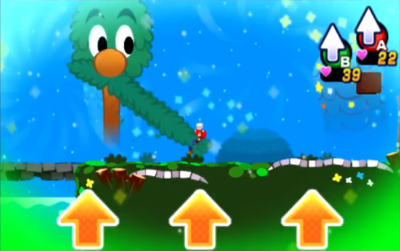
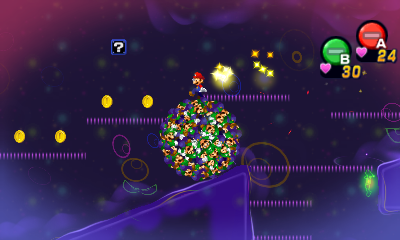
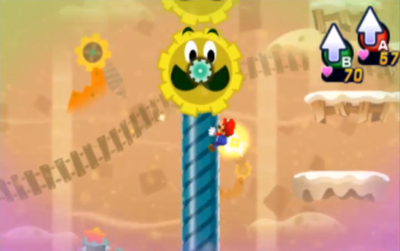
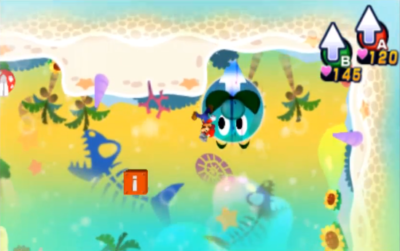
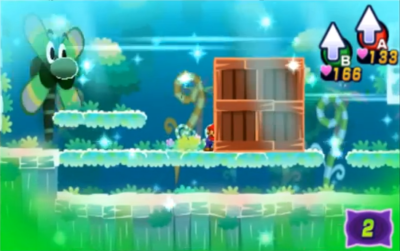


 Game Design Companion: A Critical Analysis of Wario Land 4 - $7.99
Game Design Companion: A Critical Analysis of Wario Land 4 - $7.99 Level Design: Processes and Experiences
Level Design: Processes and Experiences Speed Boost: The Hidden Secrets Behind Arcade Racing Design - $5.99
Speed Boost: The Hidden Secrets Behind Arcade Racing Design - $5.99 Adventures in Games Analysis: Volume I - $5.99
Adventures in Games Analysis: Volume I - $5.99







